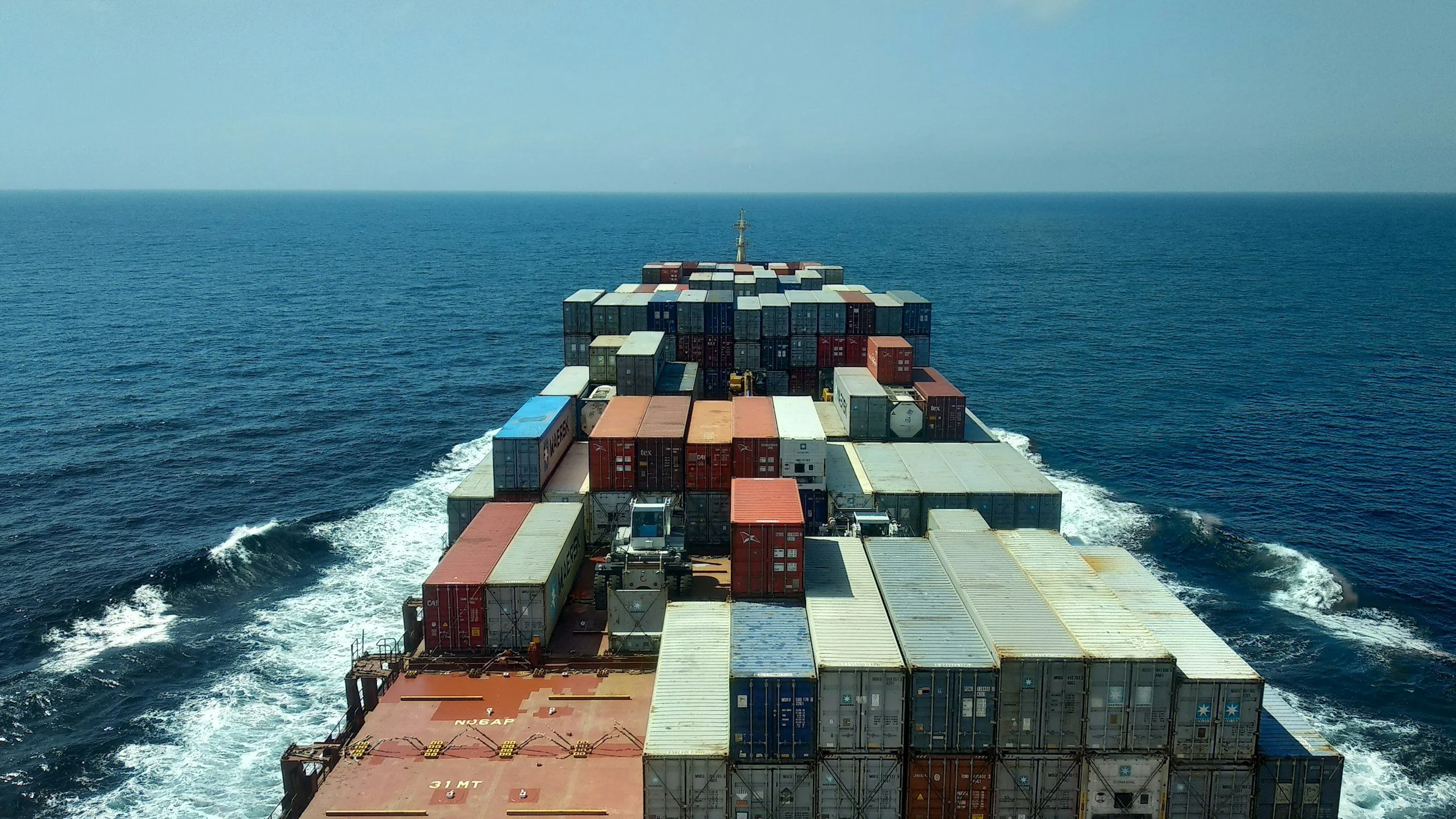
Search our collection of articles, blogs, resources and more to stay informed on the goods movement sector.
Port Indirect Source Rule Newsletter #16
Southern California’s business, labor, and community leaders are uniting behind the Ports of Los Angeles and Long Beach’s Cooperative Agreement with SCAQMD. This balanced, results-driven plan builds on decades of clean air progress and collaboration. Join us on November 7 to show your support for a cleaner, competitive future for our ports and communities.
September 2025 Report on Containerized Trade at North American Seaports
In September 2025, the Ports of Los Angeles and Long Beach saw declines in container volumes year-over-year, but still posted gains compared to 2019. Other major U.S. and Canadian seaports showed divergent trends. Explore full port comparisons and regional performance in this latest analysis.
Preliminary August 2025 TEUs
In August 2025, San Pedro Bay ports handled 944,832 inbound loaded TEUs, a 2.2% decrease from the previous year but a 24.3% increase from 2019.
Black Swans and Container Forecasts
By Jock O’Connell, Economist
Black swan events—unpredictable, high-impact disruptions such as strikes, cyberattacks, and maritime crises—are reshaping container shipping and global supply chains. Learn how ports, shippers, and logistics operators are adapting forecasts and strategies to build resilience against these rare but costly events.
Preliminary July 2025 TEUs
July 2025 TEU report: LA and Long Beach hit record volumes while Oakland and Vancouver surge. Explore U.S., Canada & Mexico port trends.
The China Trade
USWC ports see steep drop in China trade—imports down over 25% and exports off more than 65% since pre-COVID levels.
Trucking a Container in California Can Cost 35% More Per Gallon of Diesel Than in Houston
California truckers face record diesel prices, paying 35% more than Houston and far above East Coast and Gulf Coast averages. Diesel for drayage in California tops $5/gal, driving up trucking costs at LA, Long Beach, and Oakland ports.
That Big Box on the Road
The story behind 53-foot containers on U.S. highways—how the 1982 STAA law and Rep. Glenn Anderson changed trucking forever.
The Lumpy USWC Share of Recent U.S. Container Trade
West Coast ports see volatile market share in U.S. container trade as tariffs, labor risks, and East Asia imports drive shifting cargo flows.
Port Indirect Source Rule Newsletter #14
SCAQMD delays Ports ISR rulemaking for 45 days as Ports LA & LB push for a voluntary, collaborative path to cleaner air—45-day negotiation window ends Sept 18.
Who’s Number One?
Normally, the Port of Los Angeles is the nation’s busiest container gateway. Still, from time to time, the Port of New York/New Jersey (PNYNJ) lays claim to the title, invariably causing the East Coast media to break out the celebratory sparklers. The contest for the nation’s top container port is typically framed in the media as a rivalry between PNYNJ and the Port of LA, the Yankees vs. the Dodgers, if you will.
Preliminary June 2025 TEUs
On July 9, the National Retail Federation’s Global Port Tracker projected that 2.06 million TEUs laden with goods from abroad would arrive in June at the thirteen U.S. mainland ports it surveys.
Is the USWC Marketshare of U.S. Container Trade Winding Down?
Explore whether the U.S. West Coast’s share of container trade is declining, examining recent trends, stats, and implications for port competition.
The USWC’s Diminishing China Export Trade
Through the first five months of 2025, containerized export tonnage from U.S. West Coast ports to China and Hong Kong plunged by 42.1% from the same period a year earlier and by 61.4% from the same months in 2019.
Japan’s Container Trade with the Ports of Tacoma and Seattle
Once upon a time, Japan was the primary overseas trading partner of the ports that now operate as the Northwest Seaport Alliance. Indeed, Japan was the leading U.S. trading partner for containerized cargo, according to a 1980 report from the U.S. Maritime Administration.
To Reduce or Not to Reduce Emissions? That is the Question
Jennifer Cohen, PMSA Vice President, Government Relations
PMSA has sponsored a bill for the past several years in the California state legislature to facilitate testing and piloting, at 100% private expense, of cargo handling equipment (CHE) technology that eliminates tailpipe greenhouse gas and diesel particulate matter emissions, and nearly eliminates nitrogen oxide emissions.
A Tax on Trade: The Hidden Costs of the Port ISR
Mike Jacob, President
Examine how the South Coast Air Board’s proposed rule 2304 (ISR) acts as an indirect tax on consumers. This article analyzes regulation impacts, economic implications, and what maritime and logistics sectors need to know.
Preliminary May 2025 TEUs
Discover the latest preliminary container volumes for May 2025, revealing emerging shifts in port trade dynamics. This update highlights trends across major West Coast, East Coast, Gulf, and Canadian ports, offering a snapshot of loaded and empty TEU activity.
America's Favorite Fruit: The Banana's Journey to Your Grocery Aisle
Trace the journey of America’s favorite fruit—from tropical plantations to supermarket shelves. This article delves into banana production, shipping logistics, and trade dynamics shaping the fruit’s path to your grocery cart.




















